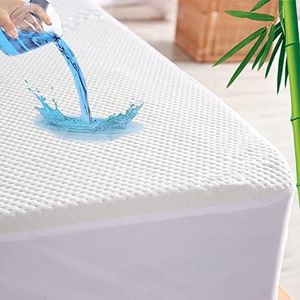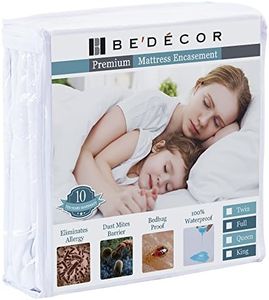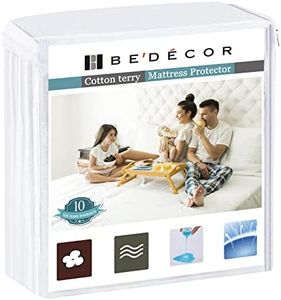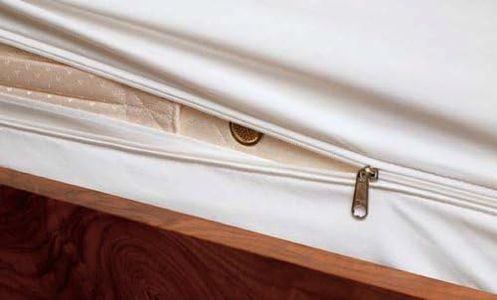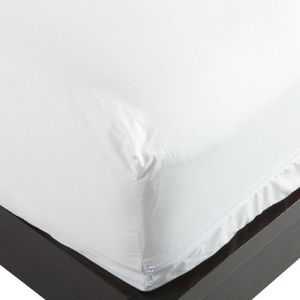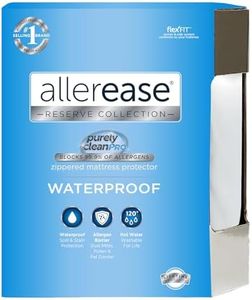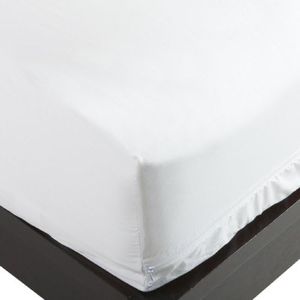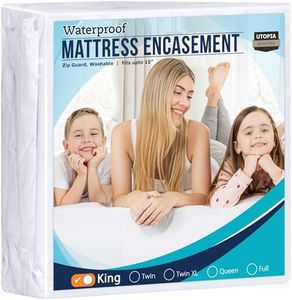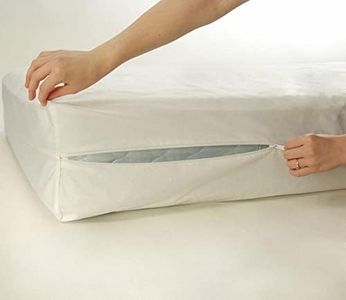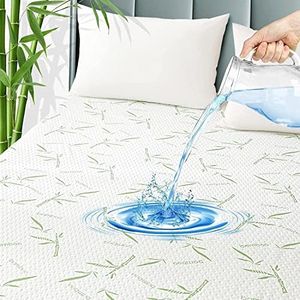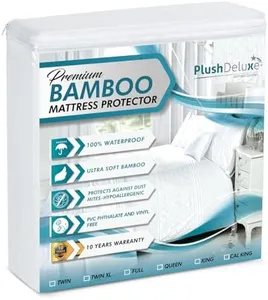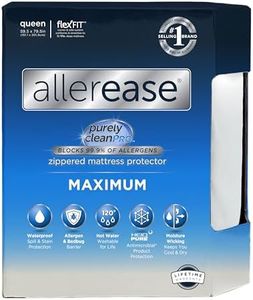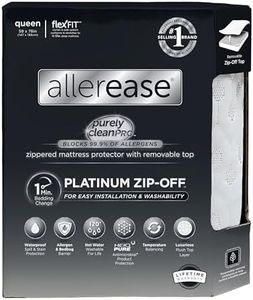We Use CookiesWe use cookies to enhance the security, performance,
functionality and for analytical and promotional activities. By continuing to browse this site you
are agreeing to our privacy policy
10 Best Allergy Mattress Covers
From leading brands and best sellers available on the web.Buying Guide for the Best Allergy Mattress Covers
Choosing the right allergy mattress cover is an important step for anyone looking to reduce exposure to dust mites, pet dander, and other allergens that can linger in your bedding. A good allergy mattress cover acts as a protective barrier, helping you sleep more comfortably and breathe easier. Since you'll be using it every night, it's important to consider its effectiveness, comfort, ease of use, and durability. Understanding the key features can help you select a cover that matches your specific needs and sleep habits.Material and Fabric TypeThe material of a mattress cover determines how well it can block allergens and how comfortable it feels. Common materials include tightly woven cotton, polyester blends, and advanced synthetic fabrics. Tightly woven cotton and microfiber are known for being soft and breathable, while some synthetics provide better waterproofing. For allergy protection, a fabric with a small pore size is best, as it prevents tiny particles from getting through. If you prefer natural and cooler fabrics, cotton is a good option, but for higher allergen protection or moisture resistance, consider synthetic blends. Your choice should depend on whether you prioritize comfort, breathability, or maximum allergen barrier.
Pore SizePore size refers to the size of the tiny holes in the fabric, measured in microns. A smaller pore size means fewer allergens can pass through the cover. Typically, a pore size under 10 microns is recommended for effective allergen protection, but even lower values, such as 2-6 microns, provide more thorough blocking. If you have severe allergies or asthma, opt for the smallest pore size you can find. For mild allergen issues, a slightly larger pore size may still be sufficient and possibly more breathable.
WaterproofingSome allergy mattress covers are waterproof, which can help protect your mattress not only from allergens but also from spills, sweat, and other moisture. Waterproof covers usually feature an added membrane or backing, but it's important to check that this layer is breathable to avoid overheating while sleeping. If you have children, pets, or are concerned about moisture, a waterproof cover will add extra protection. If breathability is your main concern and you don’t need moisture protection, a non-waterproof model might suit you better.
Closure TypeAllergy mattress covers generally close with a zipper, sometimes with additional features like a flap or Velcro seal to fully encase the mattress. A robust zippered closure is crucial for keeping allergens from sneaking in or out. Some covers use envelope-style flaps, but these are less effective for allergy protection. If you want the best barrier against dust mites and allergens, look for a cover with a secure zipper that fully encases the mattress on all sides.
Fit and DepthMattress covers come in different sizes to fit various mattress dimensions and depths. It's important to measure your mattress height (thickness), because an ill-fitting cover can compromise allergen protection and be uncomfortable. Covers often come in standard sizes like Twin, Full, Queen, and King, but you should check the depth, especially if you have a thick or pillow-top mattress. Make sure your cover fits snugly without being stretched too tight.
Care and MaintenanceEase of cleaning is essential for any bedding designed to manage allergies. Many mattress covers are machine washable, allowing you to regularly remove allergen build-up. Some require special washing instructions, such as low heat or no bleach. If you want low maintenance, look for a cover that is easy to remove and can be machine washed and dried. If you have allergies, washing your cover every 1-2 months is recommended to keep allergens under control.
Noise and ComfortSome covers—especially those that are waterproof—can make crinkling noises or feel stiff, which might disrupt your sleep. Softer, quieter covers often use fabric-backed waterproof layers or advanced materials that feel more like natural fabric. Pay attention to reviews or product descriptions about noise and comfort, especially if you are a light sleeper or sensitive to textures.
